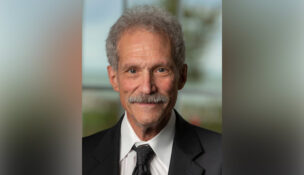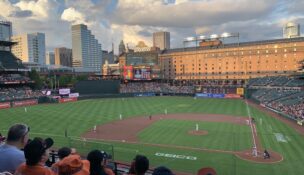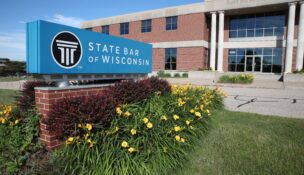Bridge for no one a costly mistake
By: David Ziemer, [email protected]//September 13, 2010//

Good bridges make good neighbors.
We’re blessed with some great bridges here in Wisconsin. The bridge that connects downtown Milwaukee to Walker’s Point (that’s the historic Fifth Ward to you younger attorneys) is a masterpiece.
The same is true of the Hoan Bridge, connecting downtown to Bay View. And how about all those magnificent bridges that span the Mississippi River?
Even a garden variety bridge lacking any style at all is still a fine thing. A bridge binds people from different communities together; it facilitates commerce and enables ships, railroads, and cars to all travel together, without constantly getting in the way of each other.
A good bridge is a functional emblem of both progress and human striving for unity.
But, one day back in 2008, I spied a bridge that was clearly just an excuse for petty government officials to squander taxpayer money.
After exiting Hwy. 30 in Madison that day, heading towards the capitol building on East Washington Ave., I saw a bridge that served no legitimate purpose whatsoever.
It wasn’t wide enough to drive a car on; it was only good for pedestrians. But in contrast to the area around the university and downtown Madison, the neighborhood in which the bridge was situated has virtually no pedestrian traffic. And what few pedestrians there are can easily cross the street at street level, just as pedestrians do everywhere else in the world.
Nevertheless, the city constructed, at great expense, a pedestrian bridge, requiring pedestrians to take a long winding ramp up just to reach it, and then take another long winding ramp down to exit on the other side.
I’ve never seen anyone actually walk across the bridge, and I assume no one does, since it is so much easier to just cross at street level.
“What a waste of taxpayer money,” I said in disgust after examining this travesty closely.
But I got a good laugh out of it last month, when I heard that the City of Madison had agreed to fork over $312,000 to a fine American corporation, McDonald’s, to settle an eminent domain dispute over the bridge.
It seems that, besides not actually bridging anything to anything else, the bridge blocks motorists’ view of the McDonald’s when heading out of town from the Capitol, and McDonald’s was entitled to compensation for the lost business.
In an interview with the Wisconsin State Journal, Madison Alderman Larry Palm “defended the bridge, while acknowledging that the process offers lessons about how to prevent such problems in future developments.”
For those of you not familiar with eminent domain, that’s code language.
You see, in building the bridge, the city encroached on McDonald’s property. That gives McDonald’s the right to seek compensation for all damages.
However, had the city built the bridge just a wee bit further west, without actually encroaching on McDonald’s property, McDonald’s would be entitled to nothing at all, even though the bridge would still have blocked motorists’ views of the restaurant and cost it business.
Had that been the case, Wisconsin courts would have held the destruction of McDonald’s business not compensable, because it would be “mere consequential damage” to “abutting property.” E-L Enterprises, Inc., v. MMSD, 2010 WI 58, par. 30.
So, when the alderman spoke of learning a “lesson,” what he was really saying is that, in the future, when the city decides to destroy somebody’s business, just to build a bridge to nowhere for no one, it will do so without actually touching their property.
I only wish that the settlement amount had been more in the nature of $300 million – an amount so large that no petty government bureaucrats would ever again even consider such a wasteful use of taxpayer money.
Good bridges may make for good neighbors. But a bridge that doesn’t connect anything will necessarily be a path less traveled.
Legal News
- Some State Bar diversity participants walk away from program
- Wisconsin court issues arrest warrant ‘in error’ for Minocqua Brewing owner
- Iranian nationals charged cyber campaign targeting U.S. Companies
- Facing mostly white juries, are Milwaukee County defendants of color truly judged by their peers?
- Milwaukee Mayor speaks in D.C. Tuesday at White House water summit
- Chicago man sentenced to prison after being caught with ‘Trump Gun’
- FTC bans non-competes
- Gov. Evers seeks applicants for Dane County Circuit Court
- Milwaukee man charged in dismemberment death pleads not guilty
- Democratic-led states lead ban on the book ban
- UW Madison Professor: America’s child care crisis is holding back moms without college degrees
- History made in Trump New York trial opening statements
WLJ People
- Power 30 Personal Injury Attorneys – Russell Nicolet
- Power 30 Personal Injury Attorneys – Benjamin Nicolet
- Power 30 Personal Injury Attorneys – Dustin T. Woehl
- Power 30 Personal Injury Attorneys – Katherine Metzger
- Power 30 Personal Injury Attorneys – Joseph Ryan
- Power 30 Personal Injury Attorneys – James M. Ryan
- Power 30 Personal Injury Attorneys – Dana Wachs
- Power 30 Personal Injury Attorneys – Mark L. Thomsen
- Power 30 Personal Injury Attorneys – Matthew Lein
- Power 30 Personal Injury Attorneys – Jeffrey A. Pitman
- Power 30 Personal Injury Attorneys – William Pemberton
- Power 30 Personal Injury Attorneys – Howard S. Sicula











